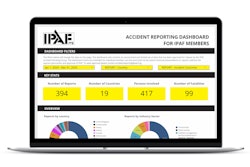
It was March 2020 when Past-President Donald Trump declared a state of national emergency due to the pandemic. I am sure today most people would pay good money to never hear the term “COVID-19” again in their lifetime.
Regardless of your personal experience with this pandemic, there is no person, industry, or business that has not been impacted by it. Many have been compelled to work from home, significantly limit their socializing, and wear masks in public – even in a bank!
As the U.S. appears to finally be out of its grip and life begins to focus on post-pandemic life, the questions are now, “What did we learn?” “What is the new normal?” and “What comes next?”
What Have We Learned?
Hopefully all have learned how to be a bit more patient – it has been a much longer time than anyone could have expected before we began to see the light at the end of the tunnel, a journey that has had several twists and turns along the way.
On an individual level, we learned to commit ourselves to a few simple behaviors – regularly washing our hands for 60 seconds, disinfecting our surroundings, and wearing face masks to protect others from potential exposure to viral contagion. These simple but basic actions have proven to be effective mitigations that we can use to lessen the risk of exposure to airborne contaminants (even the common cold) by simply taking care of ourselves and our immediate environment in the future.
 HunYoung @ adobe.stock.com
HunYoung @ adobe.stock.com
COVID-19 has, in some ways, been a catalyst to reinvent how businesses accomplish certain tasks and for companies to look at things differently. From a business perspective, the pandemic highlighted misconceptions, shortcomings, and weaknesses of business structures and management beliefs.
When faced with a crisis, you must quickly identify what is important and what is not. This is information that all businesses should not need a crisis to apply. Things like working from home, not being afraid to leverage technological efficiencies, getting back to business basics like cash flow, collections, keeping in touch with your customers, providing flawless services (doing things right the first time), prioritizing, letting your customers and employees know that you value them above all else, and treating everyone the way you would want to be treated.
People learned how to do work independently and with far less oversight. They learned what works and what doesn't work at home, and that holding virtual meetings can be effective, time-saving, and cost-effective. Managers learned to trust their employees to get on with the priority tasks, to be flexible and calm, and employees repaid their bosses’ trust with a can-do attitude and gains in productivity, while finding the benefits of a more even work-life balance.
Our ability to identify and proactively equip our teams with not just physical resources, but skills, attitudes, performance, and values will be critical in ensuring that we build back better.
We also learned that we are truly social creatures, and we want and need social interaction. While internet meetings with webcams can be effective, they cannot replace face-to-face networking, large events, and gatherings. The future will no doubt prove that there is a time and place for both.
Last, we learned that despite the challenges created by forces outside our control, we must be resilient, flexible, and strong every day. The 2009 financial crash and the 2020-21 pandemic will not be the last crisis, and we must be ready to face each one directly and decisively. Failure is never an option.
What is the New Normal?
We are never going back to “business as usual” and we shouldn’t. We cannot unlearn the lessons we’ve lived through and their impact. We will still eat, work, relax, and sleep – perhaps not the same way we did a year ago. Many will now vacation in the same place – “Puerta Backyard!”
Zoom meetings, webinars, virtual trade shows, sanitizing, face masks during cold/flu season, washing hands, sanitizing stations everywhere, and work-from-home options for those employees not mandated to work in the office are all examples of permanent changes that are here to stay. Companies are considering what tasks that are not essential to perform on site.
We are building more adaptive teams, who are easily in touch with each other, and connection has become a priority to support working remotely. We can move faster and act in more agile ways than we thought and have plans in place to counteract business disruptions.
 ETAJOE @ adobe.stock.com
ETAJOE @ adobe.stock.com
The pandemic has left businesses with residual hurdles to contend with, such as a perplexing collection of supply-chain and logistical disruptions. Manufacturers can’t build when critical components are missing. Shipping lead times are extended beyond belief. Rehiring and adding new employees are a greater challenge. Many costs are increasing at unprecedented rates. Wages and overheads are rising, and the knock-on effect of pent-up domestic spending, and the difficulties and expense of overseas travel, has meant a shortage of construction products as people turn to home improvements and adding a pool to the yard!
The new normal is shorthand for the idea that change is constant, and all must adapt at a lightning pace when crises arise. Business must shift from being reactive to transformative. We not only have to adapt to change, but we must drive change and proactively embrace the opportunities inherent in significant challenges we encounter.
What Comes Next?
Future historians will likely refer to the COVID-19 crisis as an inflection point – an event that changed the world and will be looked back upon as pivotal.
There is no dispute that 2020 was a year like few others in our lifetime, with truly worldwide impact. While it is impossible to say with certainty what the legacy of the pandemic will be for the U.S., it is clear that business leaders must maneuver between managing through the immediate disruptions of the present while predicting and planning for the future.
Businesses are dealing with safety, recovering business, and figuring out how to bring back employees and equipment. During the pandemic, we learned to cope; in the post-pandemic world, we need to learn to prosper, find the opportunities created by changes in customer behavior and attitudes toward office work and travel, and consider new possibilities of what can be.
But just being aware that things are different and knowing what to do about it are two different things. We are in a new place and are never going completely back to where we were. What’s missing is a sense of what behaviors have changed for good and which are likely to revert to pre-pandemic norms.
If we had a crystal ball to gaze into the future, it’s unlikely we would be motivated to do anything differently as most people do not like change. Said differently, most people are not sufficiently motivated to change. Like wearing a face mask to mitigate others’ risk of exposure to airborne contaminants. How many people could not wait to remove the requirement and hope to never wear one again? Why? Didn’t the use of masks prove to be effective? Didn’t we see how colds and flus spread at our children’s schools, at the office, or while traveling?
Everyone talks about the future, but most folks are not motivated to really do anything to plan for it proactively. Like a stretched rubber band that wants to return to its resting position, people do not like the tension between ‘normal’ and ‘change.’ Normal is comfortable and change inserts tension and pressure that most want to go away. The path we travel is the path of least resistance.
What the future holds is a key to new opportunities for the people, managers, and workers alike, who embrace change as their normal. They learn never to be content with normal. We live in a different time where the pace of change is accelerating. COVID-19 underscored how important it is to have tools that improve decision-making in a crisis. The pandemic forced businesses to adapt to required changes, many of which will remain as they have resulted in improved productivity and customer satisfaction. The rush to return to normal will be tempered by the lessons learned.
While we are not always in control, and there will be times when we are completely powerless to outside influences, we do control our actions. Where we go from here is in our hands. Learn to be comfortable with change and rise to new challenges. In so doing, we unlock opportunities.
![Tony Groat Edited 5b57430ec070e[1] Headshot](https://img.forconstructionpros.com/files/base/acbm/fcp/image/2024/06/Tony_Groat_edited.5b57430ec070e_1_.667c30792412c.png?auto=format%2Ccompress&crop=faces&fit=crop&h=48&q=70&w=48)




















